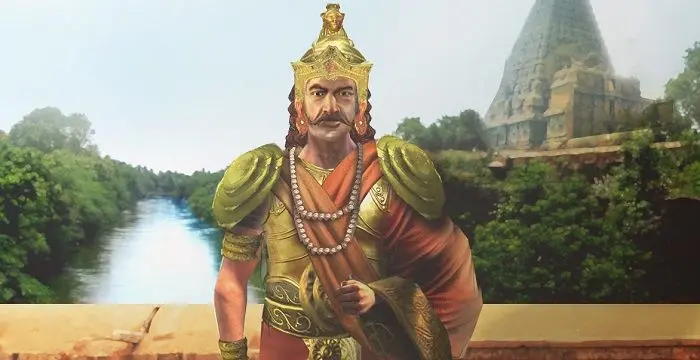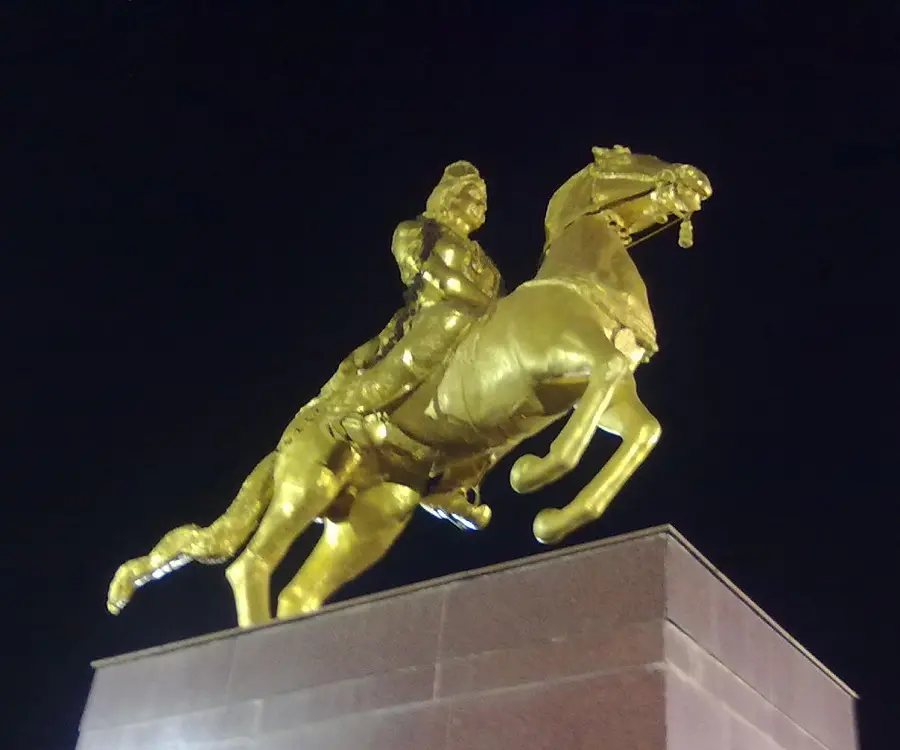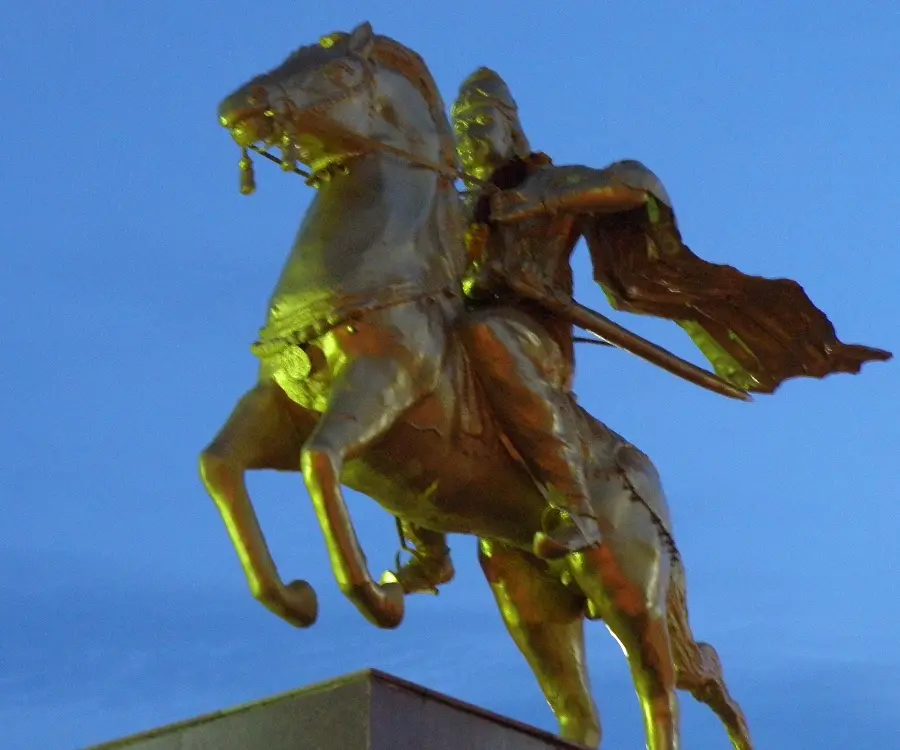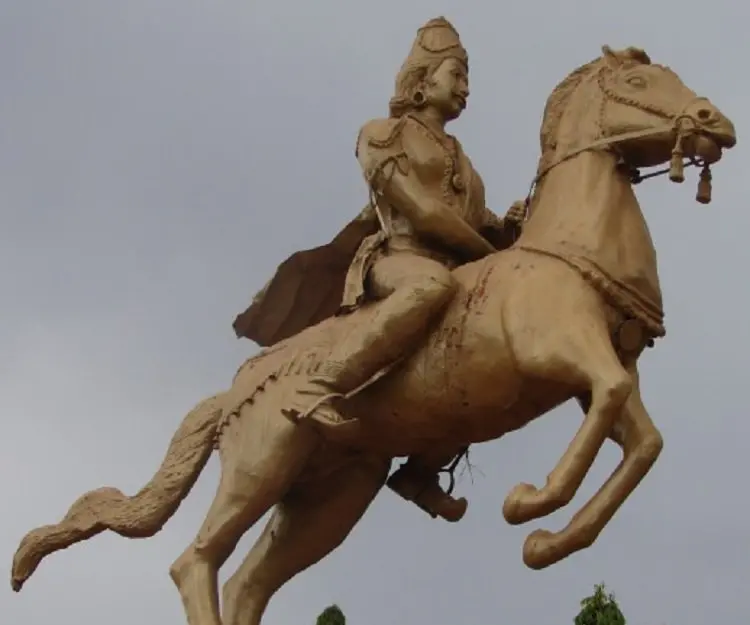
Raja Raja Chola I - Kings, Timeline and Childhood
Raja Raja Chola I's Personal Details
Raja Raja Chola I was one of the greatest rulers of India, who expanded the Chola Dynasty as a powerful empire under his reign
| Information | Detail |
|---|---|
| Birthday | 947 |
| Died on | January 1, 1015 |
| Nationality | Indian |
| Famous | Historical Personalities, Emperors & Kings, Emperors, Kings, Sovereign |
| Siblings | Aditya Karikalan, Kundavai, Kundavai Pirāttiyār |
| Known as | Rajaraja Chola I |
| Childrens | Rajendra Chola I |
| Religion | Hinduism, Shaivism |
| Gender | Male |
| Father | Parantaka Chola II |
| Famous as | Sovereign |
| Died at Age | 68 |
// Famous Emperors
Sundiata Keita
Sundiata Keita was the founder of the Mali Empire in West Africa. This biography profiles his childhood, early life, struggles, founding of empire, rule, administration, achievements and also gives some fun facts.
Ashoka
Ashoka was the third emperor of the Mauryan Dynasty and ruled almost the entire Indian subcontinent. This biography profiles his childhood, life, reign, achievements and timeline
Murad IV
Murad IV was one of the mighty Sultans in the history of the Ottoman Empire. This biography profiles his childhood, family, accession, rule, administration and timeline.
Raja Raja Chola I's photo
Who is Raja Raja Chola I?
Raja Raja Chola I was one of the greatest monarchs in Tamil history. He rose to prominence by bringing glory to the Chola Empire and building it as a powerful and strong kingdom. Right after his accession, he began a series of conquests in South India to conquer the kingdoms of Pandyas and Cheras. By proceeding further south, he invaded Ceylon (Sri Lanka), with which began a century-long control of the Chola Empire over the entire island. The southern military wars were followed by conquests in the north and northeast, capturing Gangapadi, Nolambapadi, Tadigaipadi, Vengi, and Kalinga, defeating the Western Chalukyas, in particular. His empire extended from Kalinga in the northeast to Sri Lanka in the south. Most importantly, he played a major role in establishing a just administrative system and permitted autonomy to his local princes and lords. Besides wars and conquests, he is also remembered for building one of the finest and most magnificent architectural monuments in South Indian history. The Brihadeeswarar Temple at Thanjavur, also known as Rajarajeswaram or ‘Big Temple’, is famous for its delicate sculptures and supreme craftsmanship. He was succeeded by his son, Rajendra I, who further glorified the Chola Empire, by invading Maldives, Malabar Coast, and the remaining regions of Sri Lanka
Childhood & Early Life
Raja Raja Chola was born as Arulmozhi Thevar in 947 in Tirukoilur, as the third child of Parantaka Sundara Chola and Vananan Maha Devi.
He ascended the throne in 985 following the death of Madhuranthaga (Uttama Chola), with which started the Second Golden Age of Tamil Nadu.
Accession & Reign
During his earliest conquests, he attacked the combined armies of the Pandyas and Cheras, though there is no significant evidence of any campaign in the first eight years of his reign.
With his capital at Thanjavur, he utilized the first few years in building a strong army and preparing for military expeditions.
In 991, the army of the Sinhalese king, Mahinda V, the ruler of Anuradhapura Kingdom, revolted against him with help from professional soldiers hired from Kerala forcing him to escape south to Ruhana.
While he longed for ruling the entire Ceylon Island, the southern region of Ruhana remained beyond his reach, which was later successfully captured by his son, Rajendra.
In 994, he made his first successful campaign by destroying a fleet of Chera King Bhaskara Ravi Varman Thiruvadi at Kandalur port.
In around 998-999, he succeeded in capturing Gangapadi (Gangawadi) and Nurambapadi (Nolambawadi), in the present-Karnataka, thereby administering control over the entire Ganga country.
With southern territories added to his Empire, he moved northwards for further conquests, following which he was continuously at war with the Western Chalukyas.
His son, Rajendra, led the 900,000 army slaughtering Brahmans, women and children, while the army elephants were used for further destruction along the banks of River Tungabhadra.
In 999, he invaded the Vengi kingdom and overthrew its ruler, Jata Choda Bhima, to replace him with Saktivarman as the Eastern Chalukya king.
Bhima attacked and captured Kanchi again after his exit; however, he responded immediately by drawing him out of Kanchi, thereby securing Saktivarman to his throne in 1002. Eventually, Vengi became his empire’s subsidiary kingdom.
Soon after Vengi was captured, Rajendra set out on the conquest of Kalinga and defeated its king, Bhima, who had fled to Kalinga after being expelled from Kanchi by Raja Raja.
The territory of Udagai, a significant stronghold of the Pandyas, was raided and captured under the leadership of his son, Rajendra, and was added to the Chola Empire, sometime around 1008.
The naval conquest of the ‘old islands of the sea numbering 12,000’ was probably one of his last conquests, which included the invasion of Maldives.
While administering his control over the Bay of Bengal region, he transformed it into Chola Lake, with Nagapattinam serving as the main port of the Cholas and, perhaps, the navy headquarters as well.
Towards the later years of his reign, he shifted his attention from conquests to internal administration wherein he transformed all the territories governed by lords and local princes into dependent officials to monitor them closely.
He appointed local government authorities and formed centralized machinery to audit and control village assemblies and other public bodies without restricting their independence.
He patronized ‘’Thisai ayirathi ettu Ainootruvar’, an ancient Tamil trade organization, to promote international trade along the Indian Ocean, with countries extending from Arabia to Malaya.
Apart from being a devoted Saivist Hindu, he had utmost respect for other religions and faiths, evident from the construction of temples for Vishnu and Buddhist Chudamani Vihara for Sri Maravijayatungavarman, ruler of Srivijaya.
Major Battles
He conquered the port of Virinam by overthrowing the Pandyas and capturing its king Amarbhujanga. As a mark of celebration, he took the title ‘Mummudi-Chola’, meaning the three crowns – Chera, Chola and Pandya, worn by the Chola king.
With no head to oversee Anuradhapura after its ruler was expelled, he annexed northern Ceylon in 993 and destroyed the 1400-year old Sinhala capital, declaring Polonnaruwa as the new capital renaming it Jananathamangalam.
Despite his powerful and strong army, he failed to capture the Chalukyan capital, Manyakheta, as a result of which the southern banks of Tungabhadra became a frontier between both the Cholas and the Chalukyas.
Achievements
He was successful in most of his conquests within 14 years of his reign, bringing the Pandyas, Bellary, Eastern Mysore, Tadigaipadi, Vengi, and Coorg under his possession.
He built the spectacular Siva temple in Thanjavur, also known as Rajarajeswaram, Brihadeeswarar Temple, and ‘Big Temple’, which is, today, a UNESCO World Heritage Site and part of the ‘Great Living Chola Temples’.
Personal Life & Legacy
As per records and inscriptions, he is said to have at least 15 wives, apart from Vaanathi or Thiripuvana Madeviyar, Princess of Kodumbaalur, who bore him his only son Rajendra I, his successor.
He is known to have at least three daughters – Kundavai who was married to Chalukya Prince Vimaladithan, Mathevalzagal and Chandramalli.
He was known by various names – Raja Kesari Varman Raja Raja Devar, Peruvudaiyar, and Raja Raja the Great.
// Famous Kings
Sundiata Keita
Sundiata Keita was the founder of the Mali Empire in West Africa. This biography profiles his childhood, early life, struggles, founding of empire, rule, administration, achievements and also gives some fun facts.
Ashoka
Ashoka was the third emperor of the Mauryan Dynasty and ruled almost the entire Indian subcontinent. This biography profiles his childhood, life, reign, achievements and timeline
Murad IV
Murad IV was one of the mighty Sultans in the history of the Ottoman Empire. This biography profiles his childhood, family, accession, rule, administration and timeline.
Raja Raja Chola I biography timelines
- // 947Raja Raja Chola was born as Arulmozhi Thevar in 947 in Tirukoilur, as the third child of Parantaka Sundara Chola and Vananan Maha Devi.
- // 985He ascended the throne in 985 following the death of Madhuranthaga (Uttama Chola), with which started the Second Golden Age of Tamil Nadu.
- // 991In 991, the army of the Sinhalese king, Mahinda V, the ruler of Anuradhapura Kingdom, revolted against him with help from professional soldiers hired from Kerala forcing him to escape south to Ruhana.
- // 993With no head to oversee Anuradhapura after its ruler was expelled, he annexed northern Ceylon in 993 and destroyed the 1400-year old Sinhala capital, declaring Polonnaruwa as the new capital renaming it Jananathamangalam.
- // 994In 994, he made his first successful campaign by destroying a fleet of Chera King Bhaskara Ravi Varman Thiruvadi at Kandalur port.
- // 998 To 999In around 998-999, he succeeded in capturing Gangapadi (Gangawadi) and Nurambapadi (Nolambawadi), in the present-Karnataka, thereby administering control over the entire Ganga country.
- // 999In 999, he invaded the Vengi kingdom and overthrew its ruler, Jata Choda Bhima, to replace him with Saktivarman as the Eastern Chalukya king.
- // 1002Bhima attacked and captured Kanchi again after his exit; however, he responded immediately by drawing him out of Kanchi, thereby securing Saktivarman to his throne in 1002. Eventually, Vengi became his empire’s subsidiary kingdom.
- // 1008The territory of Udagai, a significant stronghold of the Pandyas, was raided and captured under the leadership of his son, Rajendra, and was added to the Chola Empire, sometime around 1008.
// Famous Historical Personalities
Sundiata Keita
Sundiata Keita was the founder of the Mali Empire in West Africa. This biography profiles his childhood, early life, struggles, founding of empire, rule, administration, achievements and also gives some fun facts.
Ashoka
Ashoka was the third emperor of the Mauryan Dynasty and ruled almost the entire Indian subcontinent. This biography profiles his childhood, life, reign, achievements and timeline
Jetsun Pema
Jetsun Pema is the Queen consort of Bhutan. Check out this biography to know about her childhood, family life, achievements and fun facts about her life.
Murad IV
Murad IV was one of the mighty Sultans in the history of the Ottoman Empire. This biography profiles his childhood, family, accession, rule, administration and timeline.
Xerxes I
Xerxes I (Xerxes the Great) was the fourth and the most famous king of the Archaemenid dynasty of Persia. This biography profiles his childhood, family, personal life, life history, achievements, campaigns, administration, death and other facts.
Sargon of Akkad
Sargon of Akkad, also called ‘Sargon the Great’, ‘Sarru-Kan’ and ‘Shar-Gani-Sharri’, was the founder and first king of the Akkadian Empire. This biography profiles his childhood, life, rule, administration, timeline, and gives some fun facts.
Raja Raja Chola I's FAQ
When was Raja Raja Chola I died?
Raja Raja Chola I was died at 1015-01-01
Which age was Raja Raja Chola I died?
Raja Raja Chola I was died at age 68
What is Raja Raja Chola I nationalities?
Raja Raja Chola I's nationalities is Indian
Who is Raja Raja Chola I siblings?
Raja Raja Chola I's siblings is Aditya Karikalan, Kundavai, Kundavai Pirāttiyār
Who is Raja Raja Chola I childrens?
Raja Raja Chola I's childrens is Rajendra Chola I
What is Raja Raja Chola I's religion?
Raja Raja Chola I's religion is Hinduism, Shaivism
Who is Raja Raja Chola I's father?
Raja Raja Chola I's father is Parantaka Chola II
How famous is Raja Raja Chola I?
Raja Raja Chola I is famouse as Sovereign








